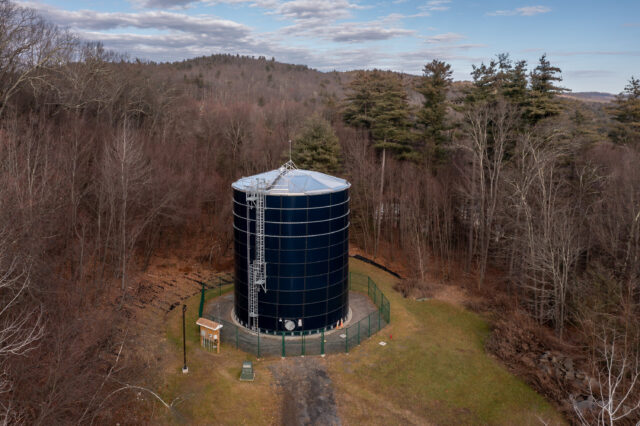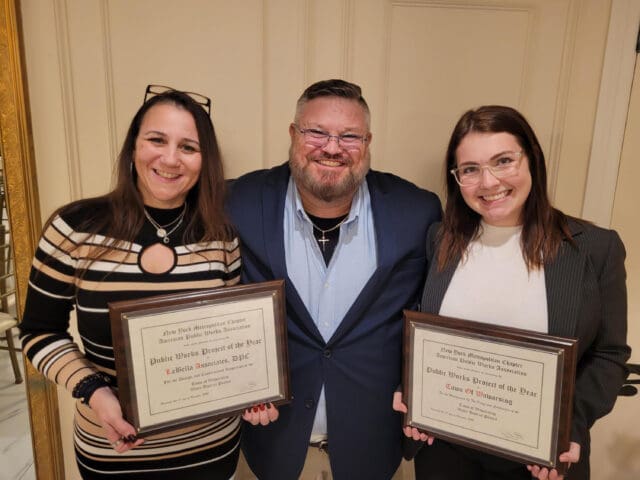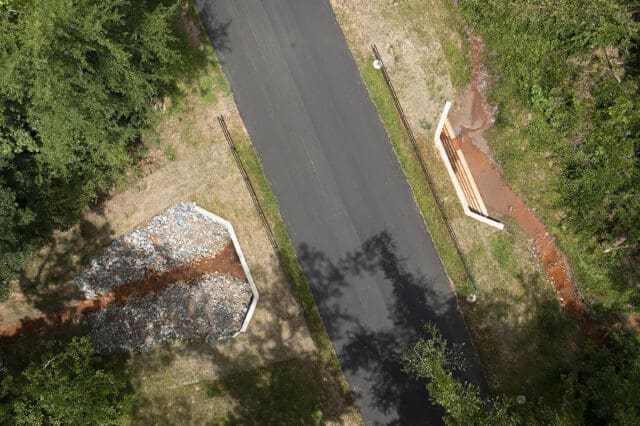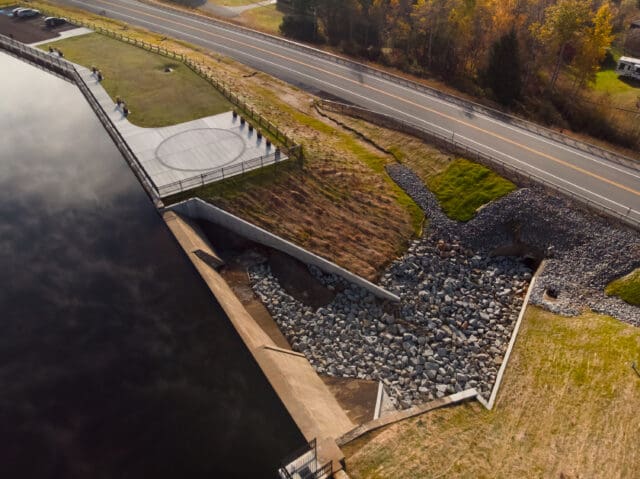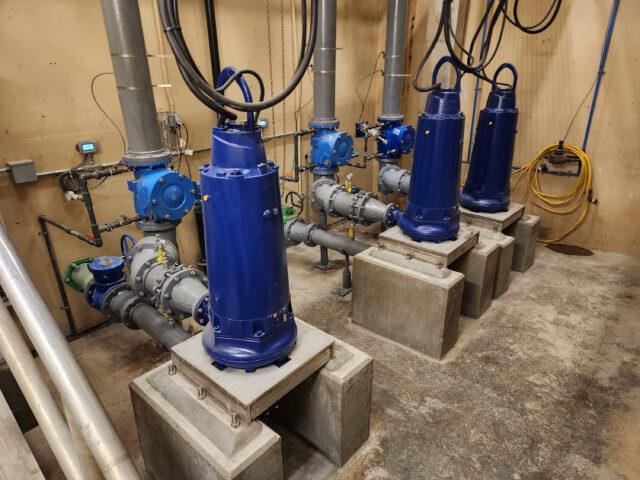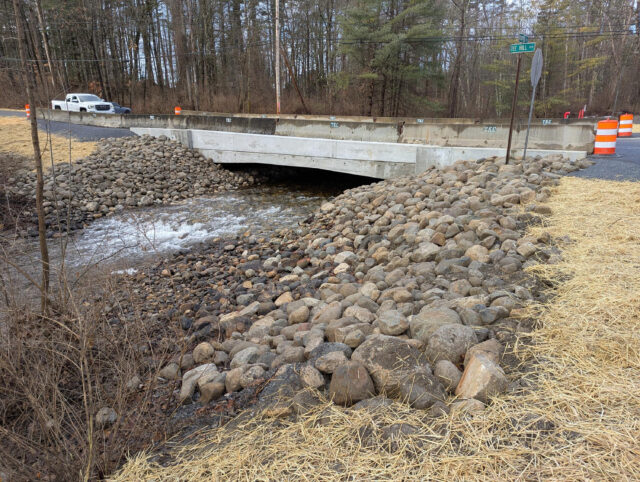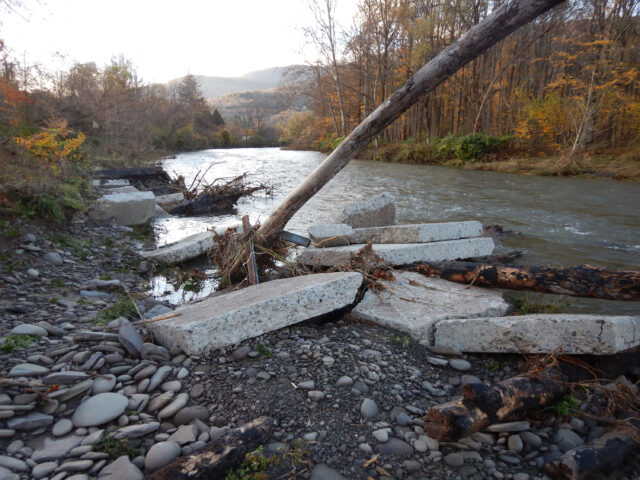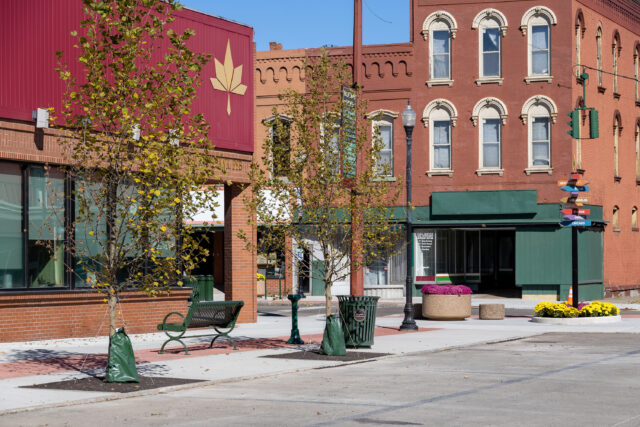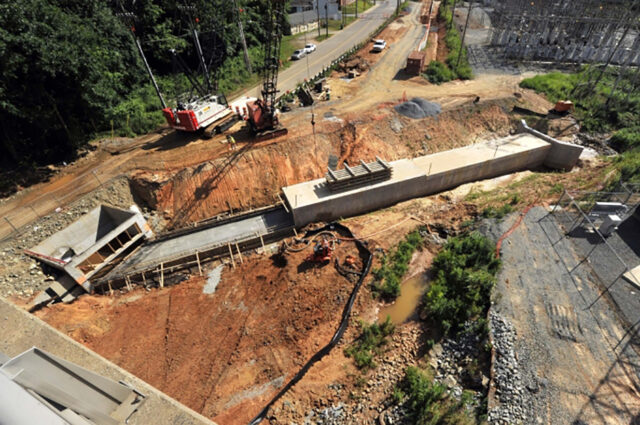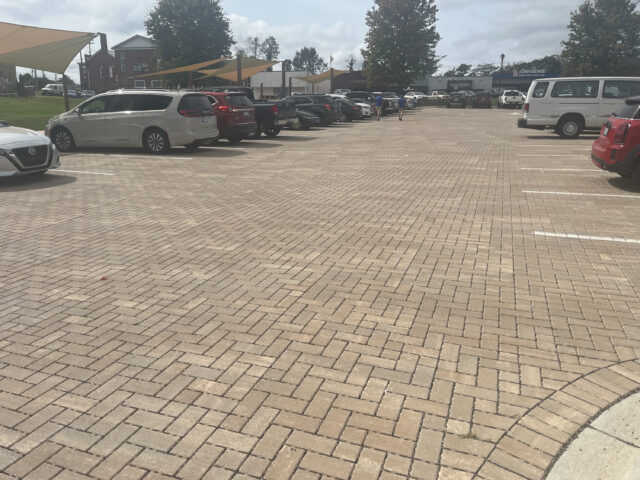A Decades-Long Initiative for a More Resilient Water Source
A Long History
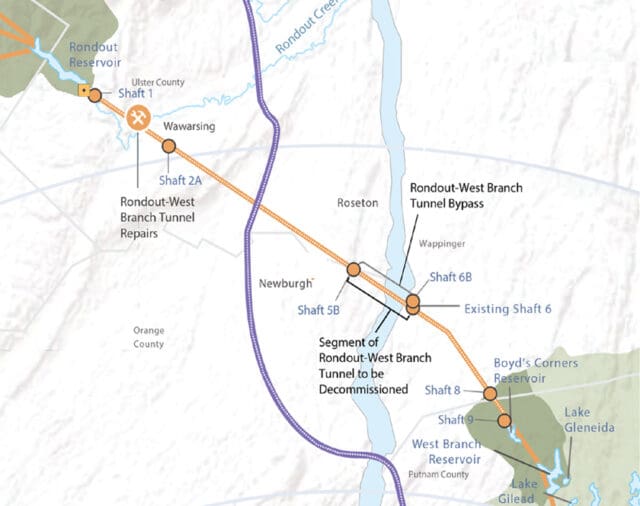
The West-of-Hudson Watershed is one of two watersheds that feed New York City’s water supply system. Located within this watershed, the Delaware Water Supply System provides nearly half of New York City’s drinking water, which is transported through the Delaware Aqueduct (“aqueduct”).
In 1992, leaks from the aqueduct were discovered within the Town of Wawarsing, with approximately 1.5 million gallons of water seeping into the ground each day. In addition to causing flooding, the leaks were feeding a groundwater aquifer in the Wawarsing area, which some residential wells became partially dependent on.
Facing a Timely Challenge
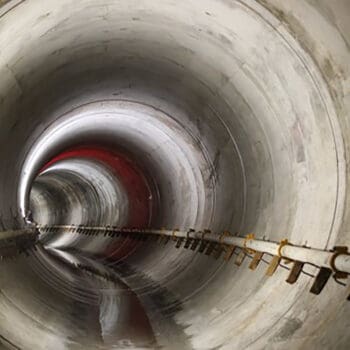
The New York City Department of Environmental Protection (NYC DEP) committed to funding and making necessary repairs to fix the tunnel leaks, as well as providing assistance to affected residents. However, to repair the tunnel’s leaks, the Delaware Aqueduct needed to be shut down and drained. This process would draw water from the groundwater aquifer, causing a drastic drop in groundwater levels and potentially running residential wells dry in Wawarsing.
In Search of a Solution
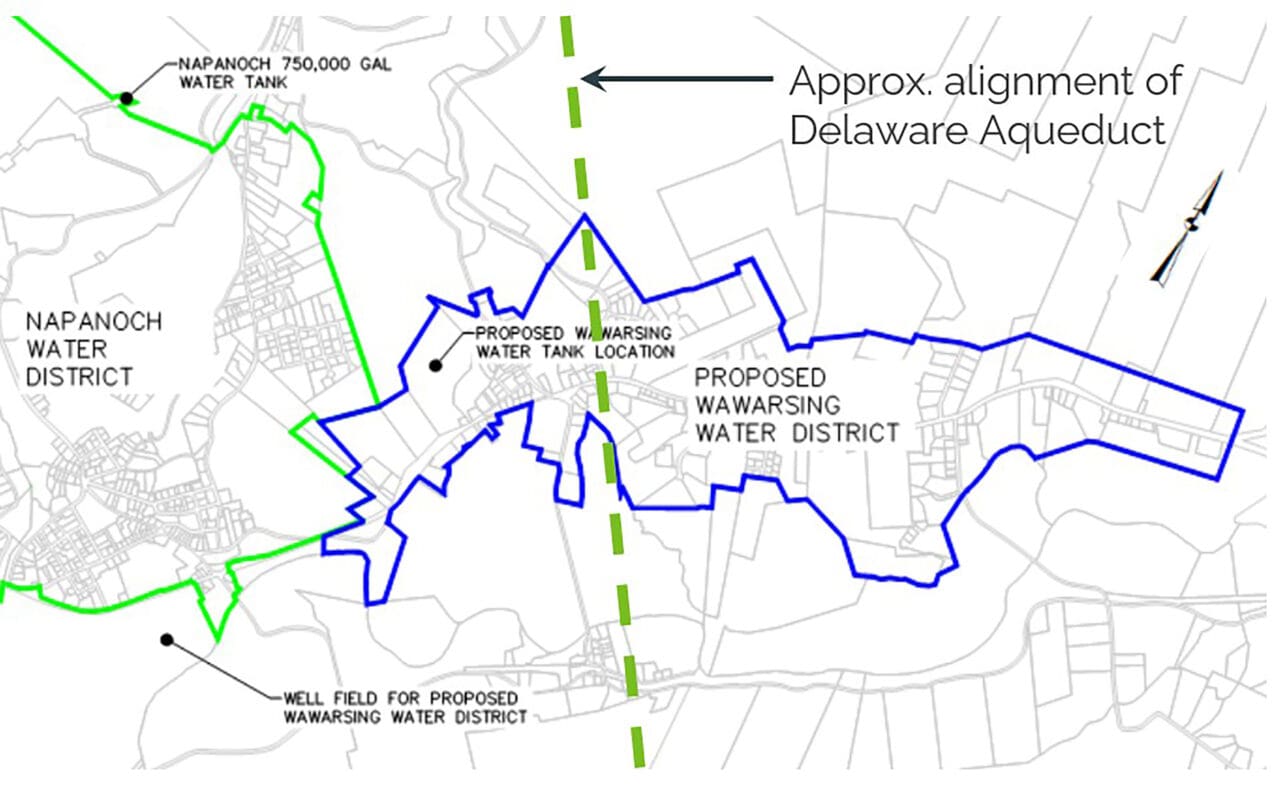 The solution was to create a water district—quickly—with a sufficient source of water that is outside the influence of the tunnel repairs. The Wawarsing Water District would span 684 acres, covering 278 parcels and a 2.5-mile-long stretch along US Route 209, with the Delaware Aqueduct running directly underneath.
The solution was to create a water district—quickly—with a sufficient source of water that is outside the influence of the tunnel repairs. The Wawarsing Water District would span 684 acres, covering 278 parcels and a 2.5-mile-long stretch along US Route 209, with the Delaware Aqueduct running directly underneath.
The next task was locating water supply wells with adequate capacity. The Town hired LaBella to identify a source, and an extensive soil boring program was deployed.
In 2018, LaBella identified a highly productive aquifer on farmland owned by the New York State Department of Corrections and Community Supervision (DOCCS). Two pumping tests confirmed that the new wellfield met the capacity requirements and delivered overall excellent water quality, meeting New York State Drinking Water Standards. DOCCS granted the Town of Wawarsing permanent easement to use the wellfield.
In 2019, LaBella prepared a Map, Plan & Report (MPR) to outline the proposed water service area, its design, and associated costs, including capital costs, hookup costs, and operation and maintenance expenses.
Pre-Design
 LaBella’s survey team performed an aerial topographic survey, a field survey, and right-of-way mapping. Our geotechnical engineers completed more than 100 soil borings, while subsurface utilities were marked out using electromagnetic utility designation and ground-penetrating radar. Our environmental scientists provided aquatic resources and ecological services for the project, including wetland delineation and permitting. We also identified potential timber rattlesnake dens for monitoring and educated contractors on species identification, avoidance, and minimization strategies.
LaBella’s survey team performed an aerial topographic survey, a field survey, and right-of-way mapping. Our geotechnical engineers completed more than 100 soil borings, while subsurface utilities were marked out using electromagnetic utility designation and ground-penetrating radar. Our environmental scientists provided aquatic resources and ecological services for the project, including wetland delineation and permitting. We also identified potential timber rattlesnake dens for monitoring and educated contractors on species identification, avoidance, and minimization strategies.
Of this decades-long project, the next and greatest task was earning public trust. An awareness campaign included public hearings, information sessions, presentations, mailers, door-hangers, a dedicated website, direct phone line, and social media.
Design & Construction
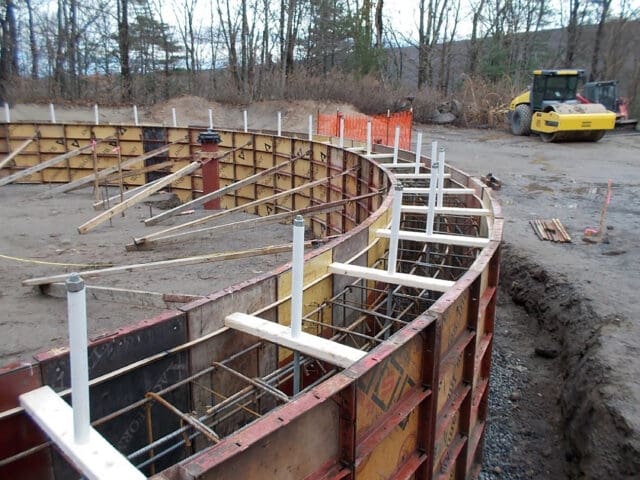 LaBella prepared the water district concept design, which included:
LaBella prepared the water district concept design, which included:
- A 478,000-gallon glass-fused-to-steel AQUASTORE water storage tank
- Three production wells with submersible pumps
- A water treatment plant with greensand filtration and chlorination
- 41,800 linear feet of polyvinyl chloride (PVC) and high-density polyethylene (HDPE) water mains of varying diameters along Route 209 and local side roads
- 180 individual private property connections
- A hanging bridge pipe across the Vernooy Kill which minimized impacts to aquatic resources and eliminated the need for additional DEC permits
Using WaterCAD, LaBella’s engineers identified opportunities to downsize pipe diameters and shorten pipe runs, saving costs while maintaining adequate pressure and flow to all residents within the district.
The water plant’s ultimate treatment capacity was designed to deliver 243 GPM to the distribution and storage system.
The selected aquifer had excellent water quality, except for a slight exceedance in manganese. Manganese reduction was achieved by using a greensand filtration system to meet the Maximum Contaminant Level (MCL). The manganese-reduced production water was then injected with chlorine and introduced into a clearwell to achieve disinfection contact time before delivery to the distribution system via booster pumps.
To connect homeowners to municipal water while the new district was developed, a transmission main was constructed to connect users to the nearby Kerhonkson Water District, which had sufficient reserve to temporarily supply water to the new district.
Project Phasing
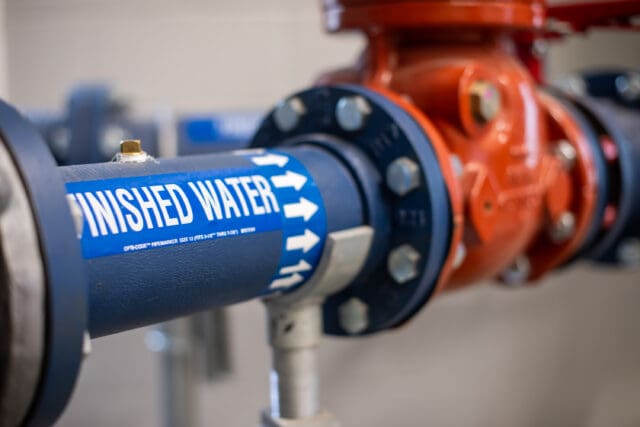 Completed in phases often running simultaneously, the project stayed on schedule, with 180 service connections completed by fall 2023, ensuring that residents had access to municipal water in time for the October 2024 tunnel shutdown, which had been delayed two years from the original 2022 schedule. Despite extensive COVID-related impacts, the project was completed on schedule in December 2024, with the project remaining close to its $21.4 million budget at a final cost of $22.3 million.
Completed in phases often running simultaneously, the project stayed on schedule, with 180 service connections completed by fall 2023, ensuring that residents had access to municipal water in time for the October 2024 tunnel shutdown, which had been delayed two years from the original 2022 schedule. Despite extensive COVID-related impacts, the project was completed on schedule in December 2024, with the project remaining close to its $21.4 million budget at a final cost of $22.3 million.
Today, the Wawarsing Water District provides 278 parcels, including 157 residences, with a clean, reliable source of water—a critical result after wells failed during the aqueduct tunnel shutdown.
An Award-Winning Project
Wawarsing Water District Project Named 2025 Public Works Project of the Year by APWA New York Metro!
The American Public Works Association (APWA) – New York Metro Chapter named the Wawarsing Water District project its 2025 Public Works Project of the Year!
LaBella was honored to accept the award on behalf of the Town of Wawarsing at the 35th Annual General Membership Meeting & Awards Dinner in Yonkers, New York, on November 6, 2025.
The Public Works Project of the Year Award promotes excellence in public works projects by recognizing the partnership between the managing agency, the consultant/architect/engineer, and the contractor who—working together—complete public works projects.
